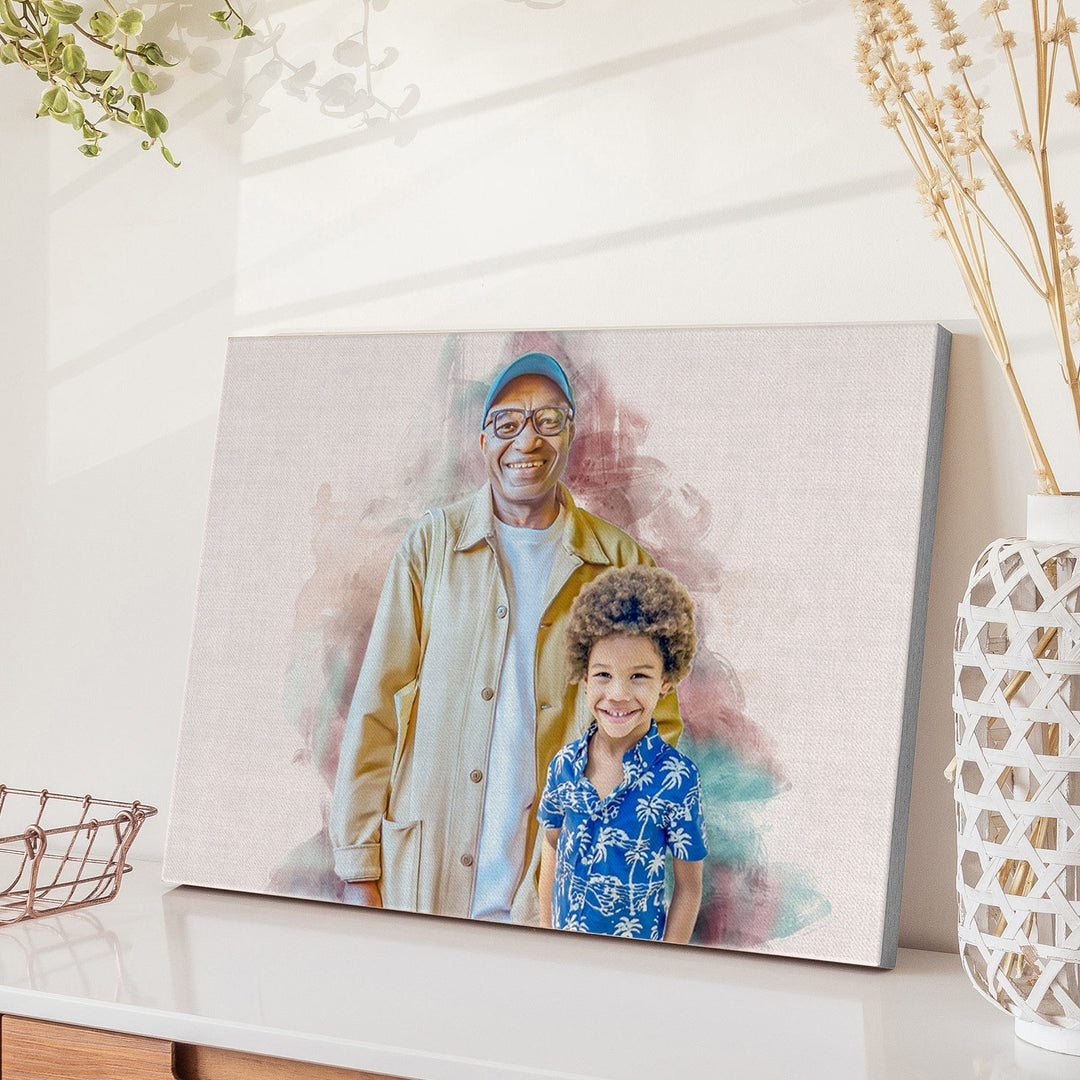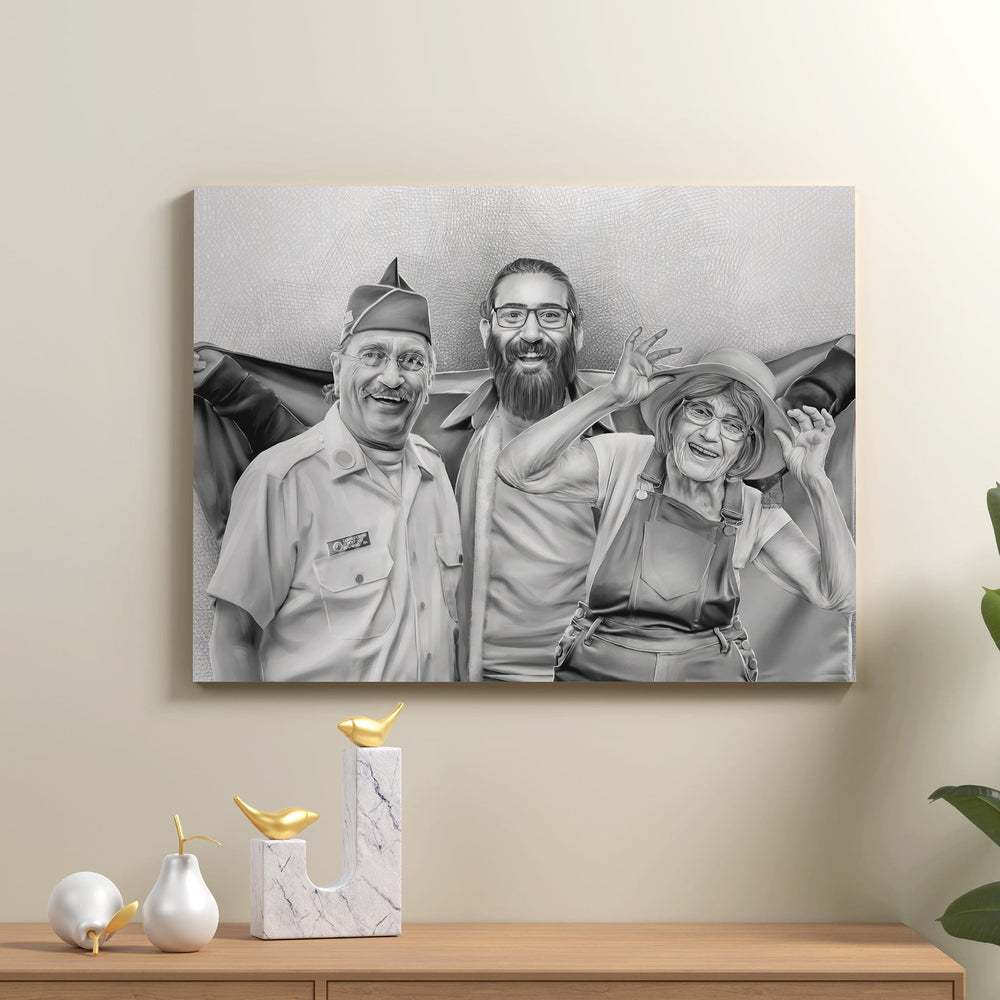A Beginner's Guide to Using Oil Paints on Canvas

The world of art has been mesmerized by the richness and depth of oil paints for centuries. Whether it's a Renaissance artist's masterpiece or a modern-day enthusiast's creative work, the vibrancy of oil paints has brought countless images to life on canvas. However, understanding how to use oil paints on canvas can feel daunting for a beginner. This comprehensive guide aims to simplify that process, guiding you from your first brushstroke to the final protective sealant.

The Basics of Oil Paints (Composition and Characteristics)
Oil paint is a blend of pigments and drying oil. The oil is typically linseed, but options like walnut or poppy seed oil are also popular. The type of oil used can influence the drying time, viscosity, and level of glossiness.
The true power of oil painting lies in its flexibility and manipulability. It dries slowly, allowing artists to continue working on their piece over an extended period, correcting mistakes, or adding layers to create depth and texture. This slow-drying characteristic also enables the smooth blending of colors directly on the canvas, giving rise to a magnificent couple oil painting or a heartwarming family oil painting.
Materials and Tools for Oil Painting
To get started, you'll need the following:
Oil Paints
For beginners, a basic set of primary colors—red, blue, yellow—along with black and white, provides a good starting point. This essential color palette allows you to experiment with color mixing and understand color theory basics.
Brushes
Brushes made from natural bristles like hog or sable are traditionally preferred for oil painting because of their stiffness and durability. Having a selection of different sizes and shapes—flat for bold, sweeping strokes; round for detailing; and filbert for versatility—equips you with the ability to express varied brushwork.
Canvas
Selecting a pre-primed canvas suitable for oil paint can help ensure your artwork's longevity. Canvas boards, being more affordable and portable, are ideal for practice and more minor works. On the other hand, stretched canvases, which come in various sizes, offer a more professional feel and are suitable for pieces you intend to display or sell.
Palette
Your palette is your mixing board, a space where colors blend to create different hues, tints, and shades. It can be a traditional wooden palette, a cleanable glass surface, or even a pad of disposable palette paper for convenience.
Palette Knife
While essential for mixing paints on your palette, a palette knife can also serve a dual purpose. Its flat, flexible blade is perfect for applying paint to your canvas in a way that brushes can't, allowing for unique textures and effects such as the impasto technique.
Easel
An easel provides a stable and adjustable platform for your canvas. It allows you to step back and assess your work from a distance, an important aspect of composition and balance in painting.
Mediums and Solvents
Mediums are substances that can alter your oil paint. They can help you achieve specific effects and finish your painting. Solvents are used to thin and clean your brushes. Always store solvents in a well-ventilated area.
Step-by-Step Oil Painting on Canvas Process

Get Your Custom Family Oil Painting Here
Sketch
Begin by sketching your composition lightly onto the canvas. You can do this with a pencil or a thin wash of a neutral color. Your sketch can be as detailed or basic as you want, serving as a roadmap to guide your subsequent paint applications.
Blocking In
In this stage, apply your colors loosely to fill in the broad areas of your canvas. This process helps you lay down the basic color scheme and values of your painting. It's all about defining the big shapes in your composition and establishing tonal relationships—no need to stress over precision or details.
Building Up Texture and Detail
Gradually, you'll add more layers of paint to build up texture and detail in your artwork. This stage allows you to refine the forms and focus on smaller details. Whether you're working on an impressionistic or hyperrealistic piece, this is where you begin to bring your custom oil painting to life.
Glazing
To achieve more profound color effects and luminosity, consider applying thin layers of transparent oil paint, known as glazes. Glazing can enrich your colors, adding depth and volume to your work.
Final Details and Highlights
The finishing stage of your painting involves adding minor details and highlights. This could include refining textures, adding sharp lines for contrast, or using a fine brush to highlight intricate details. It's like the final touch-up for your piece, adding that last level of realism or impact.
Varnishing
Once your painting is arid, it's time to apply a varnish layer. This final step is about giving your piece a finished and professional look and protecting it. The varnish acts as a shield against dust, dirt, and aging effects, helping to preserve the vibrancy and integrity of your painting for years to come.
Advantages of Working with Oil Paints
Blendability
The slow drying time of oil paints allows for seamless color transitions, which is ideal for realistic portraits or atmospheric landscapes. This will enable you to make changes and adjustments to your work over a prolonged period, perfecting the gradations of tone and color in your artwork.
Texture and Depth
With oil paints, you can build up thick, textured layers or maintain a smooth, flat surface, offering a range of possibilities to express your artistic vision. This variability enables you to achieve anything from a hyper-realistic detailed look to an impressionistic style filled with visible, textured brush strokes.
Longevity
Oil paints resist light, helping your art maintain its vibrancy over time. This resistance to fading means that your oil paintings can retain their original color and luster for decades and, with proper care, even centuries.
Challenges of Working with Oil Paints
Drying Time
The lengthy drying process of oil paints can challenge impatient artists. This means you'll have to wait for a painting to dry for days, if not weeks, before you can varnish it and correctly display it fully.
Technique
Mastering the techniques of blending, glazing, and building texture with oil paint requires practice. Understanding how to control the medium effectively may take time, adding to the learning curve of oil painting.
Clean-Up
Cleaning brushes and other tools require solvents, which should be used and disposed of responsibly due to their chemical nature. This can make cleaning up more complicated and time-consuming than other mediums like acrylics or watercolors.
Cost
High-quality oil paints and tools can be expensive. Investing in professional-grade oil paints can be a considerable expense, especially for larger projects, but the investment is often worth the result in the quality of your finished artwork.
Tips on Proper Care for Oil Paintings on Canvas
Cleaning
To clean your oil painting, use a soft, dry brush or microfiber cloth to gently remove dust without scratching the paint's surface. Avoid using chemical cleaners or water, as these can damage the oil paint over time.
Storage
Store your paintings in a cool, dry place away from direct sunlight, which can cause the colors to fade. Additionally, avoid areas with high humidity, which can cause the canvas to warp and the paint to crack over time.
Handling
Always handle oil paintings by the edges of the canvas or frame to avoid damaging the paint. The oil from your fingers can degrade the paint over time, and applying pressure to the painted surface can cause cracking or flaking.
Repair
For any significant damage, seek professional restoration services. DIY repair can often lead to more harm than good, as improper techniques can irreversibly damage your piece. Professionals have the skills and tools to carefully restore your artwork while preserving the original artist's intent.
Final Thoughts
Embarking on the journey of oil painting can be both exciting and challenging. However, the joy of seeing your creation come to life on canvas makes the journey worthwhile. Whether you are experimenting with a couple of oil paintings, a family oil painting, or a custom oil painting, remember that practice and patience are your best tools in this artistic endeavor.
Get Your Unique and Creative Artwork from Memorialize Art

Order Your Custom Couple Oil Painting Here
If creating your masterpiece seems too daunting, don't worry! At Memorialize Art, we offer unique and creative custom artworks that can bring your vision to life. From family portraits to bespoke creative pieces, our talented artists are here to transform your ideas into a reality. Contact us today, and let us help you create a lasting memory through the magic of oil painting!










